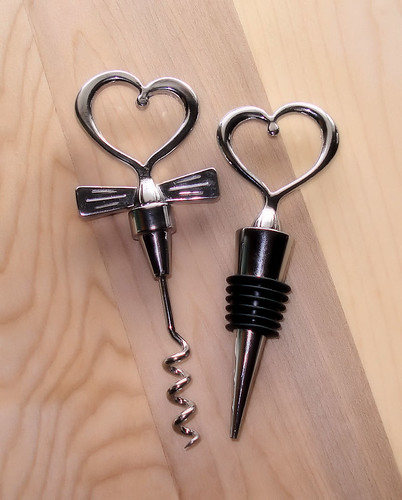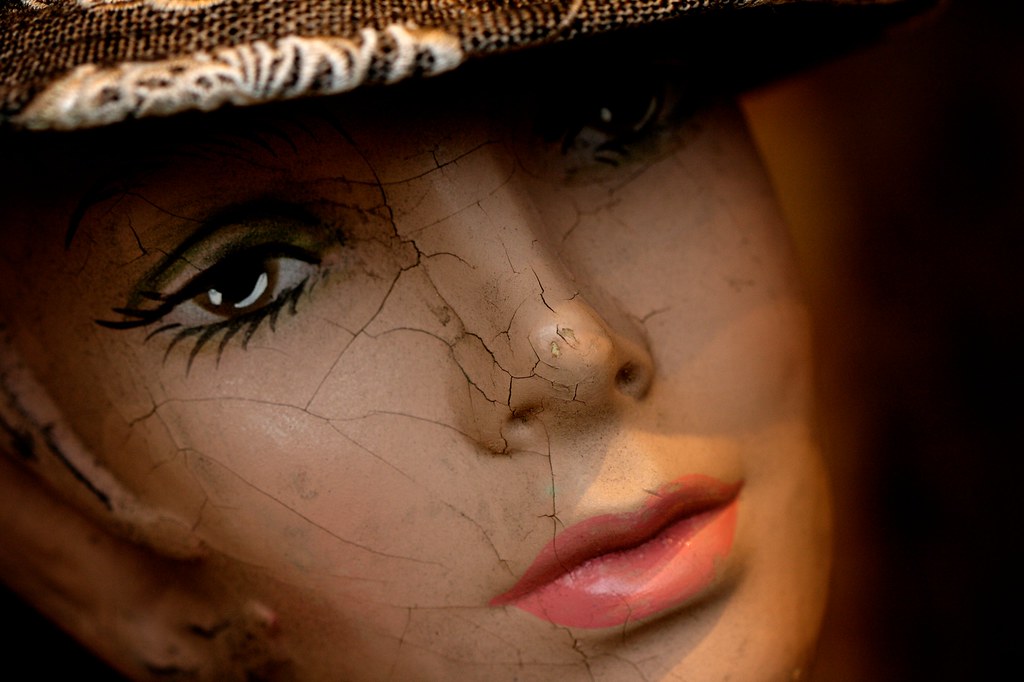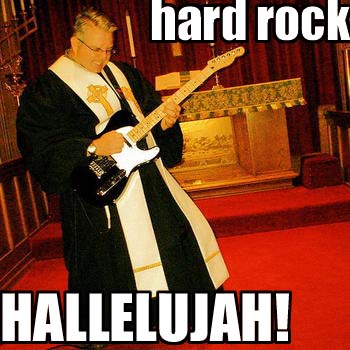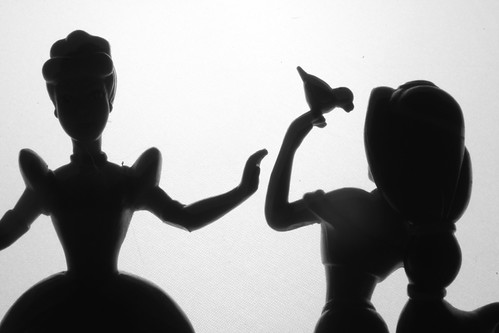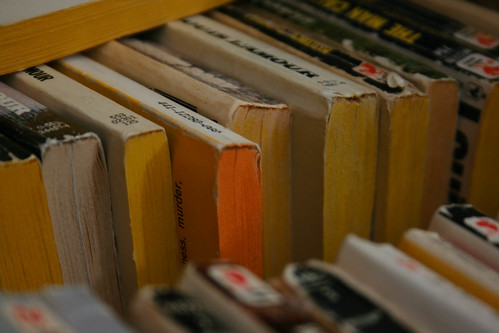Issue
I'm not surprised the discussion on racial diversity in YA came up (again) this year. Re-addressing the topic, Zoe Mariott wrote
this post about it. I also found
a few articles
here and
here addressing the need for not only more non-white characters represented in YA, but for them to be represented diversely within those groups in a non-stereotypical, non-token way, and more often as POV characters.
 |
I find a great deal of the pictures dealing with diversity
either trite or seriously ambiguous. Here, for example.
The message is "Diversity is more than race", but what
I'm seing in the picture are racially-diverse hands.
Either I'm caffeine-deprived, or there's an element
missing like the MORE THAN RACE element. |
Let's get personal for a sec: I am clearly a white girl. Not so clearly, I'm also Cherokee, though that has had so little bearing on my life that it's more like a "fun fact about me", ranking slightly higher than my insanely-accurate Gollum impression. I went through obsessions as a kid. I read everything I could about Native Americans, the Holocaust, and Greek Mythology. I immersed myself in the stories of slaves escaping on the underground railroad, and those they left behind. Some time in middle school, I discovered Japan. By the time I had graduated high school, I'd consumed such a vast amount of Japanese media that every other character I created was Japanese, or had some connection to Japan. Then I lived in Japan, and my interest deepened (and cringed, at times) and expanded. It continues to spiral out.
I've never had an issue with not having racial diversity in my stories. In fact, Raven had to tell me that I needed to dial back a bit in HELLHOUND, because it was starting to look like an insurance commercial. This isn't meant as a "bragging" statement, or as a kind of desperate claim against people who might say I'm trying to jump on a bandwagon and
seem like I'm not racist. I recognize I'm probably going out on a limb with this post, and what I say is not going to be universally agreed upon. What if the bough breaks...? Well, without a unified consensus anywhere on what's
right and
who's allowed to talk about diversity, I guess it will break for some people. I'm willing to risk it.
As John Green so eloquently states: "The truth resists simplicity."
Fear
On
YAtopia, Sarah Nicholas pointed out the following:
I'm comfortable with all these different cultures, it seems natural to me - especially in a country as diverse as the US. But I do still worry about getting something wrong. I'm doing tremendous amounts of research on cultures, but I fear that I'll make one mistake and be accused of being "ignorant" or "insensitive."
Like Morgan discussed last week with her post on LGBTQ characters in fiction, race seems to be one of those issues that the "straight-white" writers either shy away from because "no one wants to be on the wrong side of a civil rights issue" or dive into with either an open mind (good), or the hammer of PC (baaaad).
Awareness
I never really thought about diversity in my own writing until these posts. Writing characters who aren't "like me" (read: straight white female) seems natural, and very few of my stories or ideas have white-washed (or straight-washed) casts. Those that do have geographical and/or temporal limitations that preclude all but a single phenotype. It's never been an intentional choice on my part, but I feel that, by the very fact that it is unintentional, the characters aren't also being
defined by their non-white ethnicity.
HELLHOUND is a good example. The love interest is Korean, and several other supporting characters are non-white. Not every race is represented, and I've still got a higher ratio of white characters to any other race, but I didn't make this cast in order to prove a point. If I were to change one of them just to satisfy a desire to make my book's cast seem diverse, I feel like it would not only be disingenuous, it would also tip me over the edge into "insurance ad" world, where we must include everyone and have equal representation so that we may beat the masses over the head with the hammer of our political correctness (see figure below).
 |
THIS PHOTOGRAPH IS NOT POSED AT ALL!
Look, we even got a Leprechaun (left)!
And the boy on the right is bi-curious! |
Sometimes the characters just step out of our subconscious a certain way and there's nothing we writers can do to change it. If we try to force our subconscious to accept something we can't properly imagine or envision, it's never going to come across as believable. Like the doctor who blinks a little too much when handing you a prescription, writers who aren't true to their characters are handing out a pill most people aren't going to be cool with swallowing.
In
this interview on the
Diversity in YA Fiction website, Holly Black answered the inquiry about how she assembled her diverse casts:
I wish I could say that it was a conscious decision on my part, but it really wasn’t. My husband’s not white, both my critique partners for Tithe weren’t straight, and my editor was neither white nor straight, so I think my default was a world full of the people I knew and cared about.
I agree with most of what she says, though I'm actually glad it wasn't a conscious decision. As she points out, the characters that leap to a writer's mind are usually the product of composted experience. When casts populated entirely by white characters leap onto the page, it's probably for exactly the same reason. This could be completely unintentional, or it could be mostly coincidence or location, but--for example--if a white girl that hangs out primarily with other white girls, consumes books and television shows and other media about primarily white girls...her compost heap is probably going to have a hard time producing a non-white character who doesn't wear race like a costume.
 |
| Friendship is Magic |
Action
So what can this hypothetical white-bread writer girl do if she wants to break out of that?
Note: it's probably a bad idea to walk up to someone and be like, "Hi. You're black, and I need to diversify my friend-group so I can write books that satisfy the market's need for more books with non-white characters. Will you be my friend?"
Probably not the best criteria for friendship. Like characters, I think friends need to be genuine and not made because one or the other of you has an agenda. I have lots of friends from lots of backgrounds, but I honestly can barely remember how I made friends with all of them. Also, I'm not here to dole out advice on having diverse friends. In fact, that thought sort of horrifies me because it assumes a process. There is no "process" for people.
But I think the first step is to
care. As Black said, she populated her world with the people she cares about. Well, maybe this hypothetical writer doesn't have friends or family or close colleagues who are non-white or non-straight. Lucky for her, there are books, blogs, vlogs, and countless other resources where we can learn about people who are different from us. The beauty of books is being able to take a journey without having to pack our bags and go--experiencing new and wonderful things vicariously through the characters. It may not be first hand, but it's still experience. It's still another scoop of coffee-grounds on the compost heap.
At the end of her interview, Black responds to the request for advice with the following:
I think that we as writers have an obligation to tell the truth about the world — and diverse world is a true world. I also think that we have to be conscious of which stories are ours to tell, which stories we have points of identification with and which stories we need to do more work if we want tell responsibly. There is a very well respected workshop on “writing the other,” run by Nisi Shawl and Cynthia Ward; resources exist to bridge those gaps in our knowledge and experience. We have to be thoughtful, but we have to try.
 |
Is this a commentary on what these
two individuals are seeing (or looking for)
when they look at each other, or are
they trying to get us to take off our
tops, then buy denim and face-paint?
I mean. Either way. Topless face-paint.
Almost can't go wrong. |
Experience
After graduating from university, I lived in Japan for three years. Living in Asia is an experience unlike any I had ever imagined, and it opened windows in my head I had never known were there. I learned not only about Japanese culture, but about the influences from China, Korea, and many places they differ. I learned some truly awesome and some truly cringe-worthy things about Japanese culture and mind-set.
I also found out first-hand what it's like to be a racial minority in a society that is not only homogeneous, but also very insular. I learned what it's like to date someone who not only isn't from your culture, but speaks exactly zero of your native language. I learned what it's like to feel isolated because of the assumption I couldn't speak Japanese, or because many people refused to take the time to understand what I was trying to say. I know what it's like to be sought out simply because of my race. I've witnessed what it's like for Raven, a non-Japanese Asian, to get dismissed entirely as neither "Japanese enough" nor "foreign enough". No, I'm not bashing Japan--I miss living there so much sometimes it makes me ill--but with the positive comes a lot of negative, and all of that goes into the compost heap. All of that is experience to draw from.
I also learned that tossing a different set of features at a character is not enough--there's so much that fills that skin, so much history that is grafted into someone's blood. So much that's beautiful and wonderful and weird about a cultural history that is so vastly different from my own.
More importantly, I learned that people don't walk around with these differences constantly pinging around the inside of their skulls. I doubt Raven wakes up every morning and obsessively sweeps the floor, thinking, "I'm obsessively sweeping the floor because I'm Chinese, and that's what we do, because in the motherland we slept on the floor for thousands of years." I'm pretty sure she wakes up every morning and obsessively sweeps the floor thinking, "OMFG, my cat got litter on the floor how did my hair get there this is so disgusting must clean ALL THE THINGS RIGHT NOW."
Just the same, while I was in Tokyo, I didn't think "I'm drinking a lot of coffee right now because I'm a white American, so I went straight from breast-feeding to Folgers." It was more like "I'm so fucking tired right now I could sleep for a year."
If your character's race is not the point of the story, over-emphasis only highlights their race as "other" or "different", like a neon sign above that character's head, blinking off and on with the words
"TOKEN OTHER TO MAKE THIS BOOK LOOK DIVERSE".
 Costume and Stereotype
Costume and Stereotype
Earlier, I mentioned characters that "wear race like a costume". I don't have any examples of this, because when that happens, there are usually other fundamental issues with the book that, combined, result in a swift trip to the nearest wall, but I'm sure most people have encountered this at one time or another. While I think it's perfectly fine to say "I'm going to make my heroine Asian", I think coming from the standpoint of: "I need my character to be cool and different, so I'm going to make her Asian" is using the superficial "other-ness" of ethnicity as a short-cut for making them unique. And that's not okay with me.
I think Holly Black's "points of identification"suggestion is a good guideline. For example, in HELLHOUND I have as the main love interest a Korean guy named Jaesung Park. I'm not Korean, but I've lived in Asia for three years, consumed a lot of Korean media, done quite a bit of research, and have a best friend who can give me perspective on the dynamics of the Asian-American community and what a person like Jaesung, who came to the U.S. at the age of 11, might face. Jaesung has a little bit of Raven, and a little bit of my friend Mac, who lived in Germany for several years before returning home in the 7th grade, and struggling to fit back into a world he no longer belonged (at possibly the most difficult age). Points of identification. Check.
The book isn't from Jaesung's POV, and the parts concerning him aren't about him
being Korean, but neither do they shy away from the fact that he
is Korean. That has an impact on who he is. Let's look at the stereotypes he follows: he's a neat-freak who does boxing, is an Applied Math Major, and plays Starcraft.
Where the stereotypes fall apart: first off, he recognizes those aspects of himself that are "Korean Poster-Child"-ish. But recognition is not a get-out-of-jail-free pass for an author. Let's go a little deeper. Unlike many (or most) Asian characters in U.S. fiction, Jaesung is
not Asian American. He moved to the U.S. at 11, and
after memorizing a bunch of inane facts about the US that most people born here don't even know naturalized at 18 so he didn't have to pay idiotic prices for college tuition.
Martial Arts: Jaesung's parents are separated--which is still extremely unusual in Asian countries--and his rocky relationship with his father, a former boxing champ of Korea's 1980's boxing boom, complicate his relationship to the sport he grew up with, and his own sense of masculine responsibility. Also, the heroine is an ass-kicking girl who not only grew up in a gang of shape-shifting hounds, but also controls magic. A guy's got to have
something to keep some hair on his chest. Oh, wait...
Math: His relationship to math is a product of moving to the US at 11, and speaking virtually no English. He'd never particularly cared for math before, but when it was suddenly the only class he was good at? You bet he started to like it more. Even when he caught up to (and surpassed) many of his age group linguistically, math was the subject where he'd become notable, so that's what he stuck with.
Remember that "masculine responsibility" thing I mentioned earlier? Jaesung has a lot of resentment built up for his dad, particularly because his father didn't provide for their family in the way he should have. Though Jaesung is--like his mother--a gifted musician, out of a (possibly misplaced) sense of responsibility, he turns his energy toward something he thinks will help him provide better for his future family, even if he's somewhat mediocre at it. I'm still waffling over having him let go of that a bit by the end.
Till I decide, he will continue to wear his "Dat Asymptote" tee shirt.
So, what first-glance seems like a stereotype develops layers as the reader begins to understand his background and character flaws. Jaesung struggles between who he is and who he thinks people expect him to be, and that struggle extends beyond race--it's a universal concept I think everyone can understand.
The most important parts of Jaesung's character, however, have nothing to do with the fact that he's Korean. He's manic, hilarious, loyal, and takes responsibility for his actions. Though guilt-ridden for parts of the book, it's the fact that he doesn't sit still and do nothing, and that he is willing to throw his own neck on the line to protect the people he cares about which ultimately makes him the person and the character I love.
I really have no excuse for Starcraft.
(More fun facts about Jaesung: is 6'1"; INFJ; has a YouTube channel where he composes background music for other people's lyrics; is terrified of rats; insists on coasters.)
 |
| What about representation of interracial couples? |
THE OTHER SIDE OF THE ISSUE
White writers are being encouraged to step outside their skin-tones and write characters of other ethnicities, because there is and honest lack of diversity in fiction, but let's focus for a moment on the non-white YA authors. Skrybbi, as I've said, is a teen librarian, so I plumbed her big librarian brain for a couple of names:
An Na - A Step from Heaven
Gene Lee Yang - American-Born Chinese
Sharon Draper - Copper Sun
Isabelle Allende - City of the Beasts
Malinda Lo - Ash, Huntress (Also Lesbian fiction!)
Walter Dean Meyers - Monster, Lockdown
Pam Munoz Ryan - Esperanza Rising
These are all award-winning, multiple book Young Adult authors who write primarily about characters of their own ethnicity/sexual orientation. They write a good deal of the non-white main characters represented in YA, but most of them never write outside their own ethnicity, down to the last character in the book. Of course, they are making up for a huge gap in the market. They are representing the underrepresented characters in Young Adult fiction, and giving their audience characters they can identify with--people who are
like them.
Personally, I never worried about whether or not the characters in what I was reading looked like me. The character's interests and struggles and stories were what I was interested in, but then again, I never had to look very far for a character with my exact description. They were everywhere.
But if, as Black states, "
we as writers have an obligation to tell the truth about the world — and diverse world is a true world", at what point do we begin to ask minority Y.A. authors to diversify? Is it okay to expect non-minority writers to present diverse and truthful character casts, but give minority writers a free pass on that expectation because their ethnicity is underrepresented in fiction? I don't have an answer for that.
I do have an example from adult fiction, when, in 2006, African American author Millenia Black sued when her publisher insisted she change her all white cast to an all black cast, because her niche was--after a single book--African American. That spawned a huge discussion on constraining authors within a niche. And a lot of people weighed in on the issue. Hint: she's not the only one this happened to. Also, bookstore segregation of books by race is an issue a lot of people are talking about.
And don't even get us started on white-washing book covers. We'll be here a while.
*4/27/2012 update: The Atlantic Wire published a story about the ongoing struggle here.

